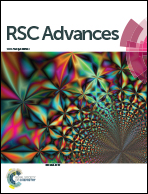Gaseous ammonia: superior to aqua ammonia in the precipitation of Mg(OH)2 under mild conditions†
Abstract
Aqua ammonia (AA) is frequently used to precipitate various metal hydroxide or oxide particles. Here, we replace AA with gaseous ammonia (GA) to precipitate Mg(OH)2 particles in MgCl2 aqueous solution under mild conditions. The results show that GA can give a higher consistency in the growth of Mg(OH)2 particles although both AA and GA essentially produce Mg(OH)2 by the reaction of Mg2+ with OH−. This work provides results that suggest using ammonia as a precipitant.


 Please wait while we load your content...
Please wait while we load your content...